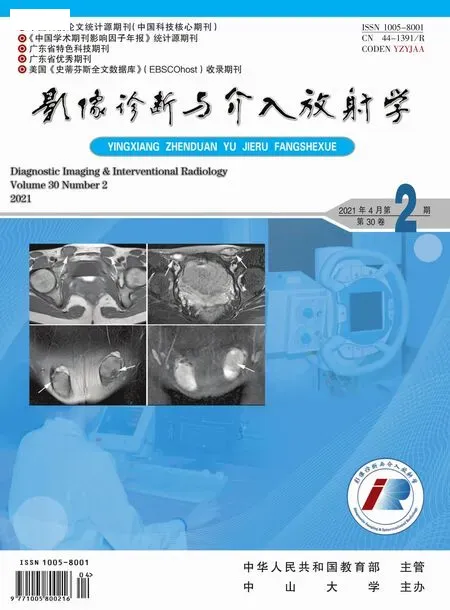Aneurysm Coiling 动脉瘤弹簧圈栓塞
Key facts
Procedure definition:coil embolization of intracranial aneurysms.Clinical setting triggering procedure:intracranial aneurysm.Best procedure approach:transfemoral guide catheter placed in internal carotid artery with subsequent intra-aneurysmal microcatheter placement and coil embolization.
Most feared complications:aneurysm rupture,embolic stroke,branch vessel occlusion;coil prolapse into parent vessel.
Expected outcome:exclusion of aneurysm from cerebral circulation.
Pre-procedure
Indications
Clinical setting triggering procedure:ruptured or unruptured intracranial aneurysm with suitable aneurysm neck geometry and lack of incorporation of parent vessel branches.
Anterior communicating,basilar tip and paraclinoid aneurysms particularly suitable due to difficult surgical exposure.
MCA aneurysms often more suitable for clipping due to surgical accessibility and frequent incorporation of parent vessel branches.
Contraindications
Unfavorable aneurysm geometry/location;inability to access aneurysm due to proximal vascular occlusion;renal failure (relative);uncorrected coagulopathy(relative).
Methods
Imaging studies(CT,MR and prior angiography).Ventriculostomy catheter to be placed prior to coiling in patients with ruptured aneurysms and ventriculomegaly.
Ventriculostomy kit should be in room(readily available).
BUN,creatinine,PT,PTT,INR.
Availability of anesthesia(most cases are performed under general).
Medications:Clopidogrel (Plavix) 75 mg and aspirin 325 mg daily commencing 4 days prior to procedure(unruptured aneurysms).
Equipment list:(1)high quality angiography machine with biplane fluoroscopy;
(2)6 Fr sheath,5 Fr neuroangiocatheter and a 0.035" angled-tip glidewire;
(3)2 rotating hemostatic valves(RHV);(4)5 or 6 Fr guiding catheter;(5)0.038" extra stiff exchange wire;(5)Microcatheter with proximal (3 cm from tip) and distal markers:0.010" coil compatible and 0.018" coil compatible.(6)0.010"or 0.014" microwire;(7)0.010" or 0.018" detachable coils (10 coils for aneurysms <10 mm):3D framing coils and non-3D filling coils.

Fig 1 a)CTA,b)VR recon struction and c)sagittal enhanced T1WI showed narrow-necked spherical aneurysm(arrow)arising from pericallosal artery.d) and e)DSA showed the pericallosal aneurysm was successfully treated with coils (arrow).Fig 2 Illustration showing a microcatheter and coil placed within an aneurysm.The inset demonstrates proper alignment or the coil marker(gray) and the proximal microcatheter marker (black) prior to detachment.
Procedure
Patient position/location:angio suite with patient supine.
Radiopague marker is placed on head for measurements.
Equipment preparation
Flush all catheters/sheaths.
Activate hydrophilic coating on catheters/wires by immersion in saline.
Procedure steps
(1)Patient under general anesthesia and foley inserted.
(2)Access femoral artery and perform baseline angiogram.Measure aneurysm and select working view which optimally shows relationship of aneurysm neck to parent vessel.
(3)Heparinize (ACT twice baseline) if unruptured aneurysm.
(4)Ruptured aneurysm:heparinize after first coil is placed or not at all.
(5)Select ECA on side to be treated with glidewire and 5 Fr catheter.
(6)Anchor a 0.038" extra stiff exchange wire in external carotid artery and exchange for the 5 or 6 Fr guiding catheter which is placed below bifurcation.
(7)Select and advance guide to level of distal cervical internal carotid artery and attach RHV with heparinized/pressurized saline drip.
(8)Roadmap image obtained in working view.
(9)Insert microcatheter/wire and place tip of microwire in aneurysm and then carefully advance microcatheter into aneurysm.
(10)Tip of catheter should be near center of aneurysm- if tip is against wall may rupture aneurysm when coil is placed.
(11)Place appropriate diameter/length 3D framing coil and perform angiogram.If angiogram shows no coil prolapse then electrolytically or hydrostatically detach coil.
(12)Aneurysm is then filled with increasingly smaller filling coils.After the 3D coil is placed subsequent coils can be placed using a roadmap performed without contrast to subtract-out initial coil mass.
(13)Final intracranial angiography to exclude embolic complication.
(14)Heparin discontinued and sheath removed when ACT<180 (or closure device is used).
Alternative procedures/therapies:surgical clipping
Post-procedure
(1)Admit to ICU with close monitoring of neuro status and blood pressure;
(2)IV fluids (normal saline);(3)Plavix×6 weeks and aspirin for life in coiled unruptured aneurysms;(4)angiography at 6 and 12 months to exclude regrowth.
Common problems
Wide-necked aneurysms may require balloon/stent assisted technique.
Complications
Stroke (GP IIb/IIIa inhibitors useful in unruptured aneurysms).
Aneurysm rupture(have protamine sulfate available and be prepared to rapidly place additional coils).
医学词汇注释与简要讲解
aneurysm 动脉瘤
【prefix】trans-经由、通过
transfemoral 经股动脉
transcranial 经颅的
complications 并发症:动脉瘤破裂,异位栓塞,分支血管栓塞,弹簧圈脱落
anterior communicating 前交通支
basilar tip 基底动脉尖
【prefix】para-在旁边,靠近
paraclinoid 床突旁的
paranasal 鼻旁的
parent vessel 载瘤血管
ventriculostomy 脑室切开术
【sufffix】-megaly 增大,肿大
ventriculomegaly 脑室扩大
splenomegaly 脾大
Clopidogrel 氯吡格雷
sheath 血管鞘
glidewire 滑行导丝
catheter 导管
exchange wire 交换导丝
microwire 微导丝
angio suite 造影床
【prefix】hydro- 水的
hydrophilic 亲水的
hydrocephalus 脑积水
heparinize 肝素化
electrolytically 电解地
hydrostatically 液体稳定地
clipping 夹闭术
protamine sulfate 鱼精蛋白

